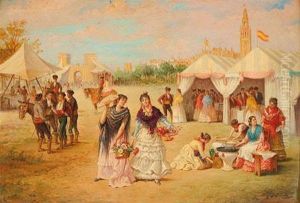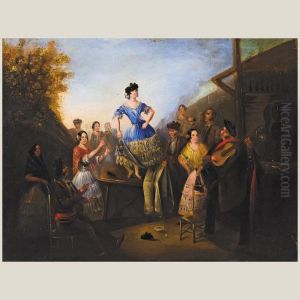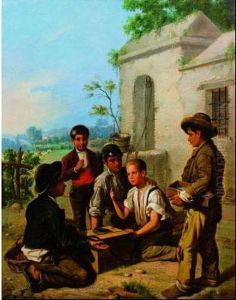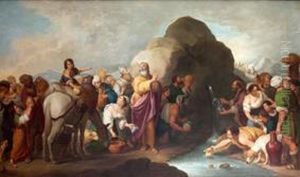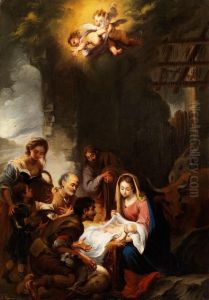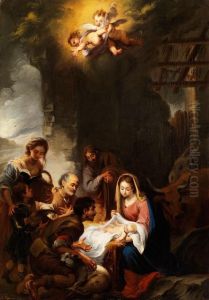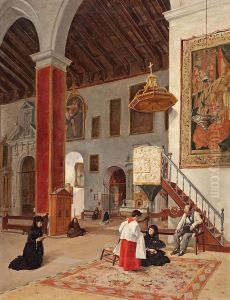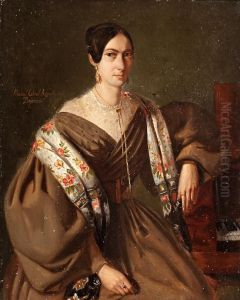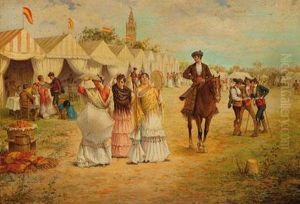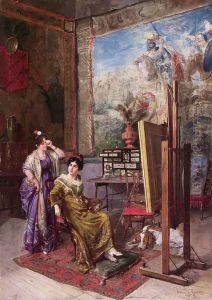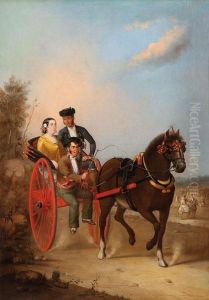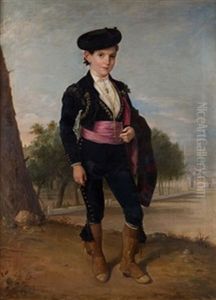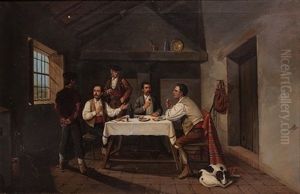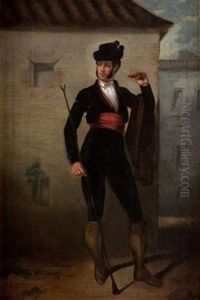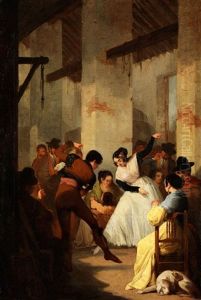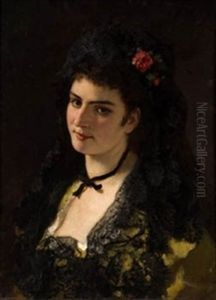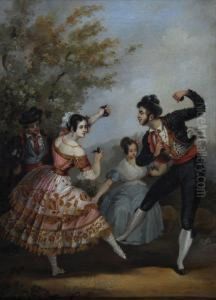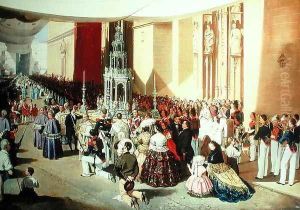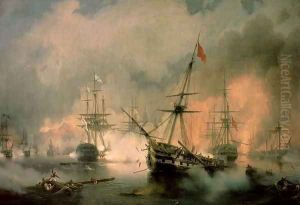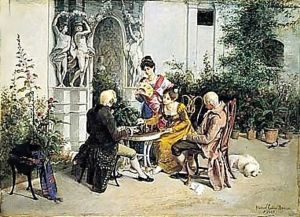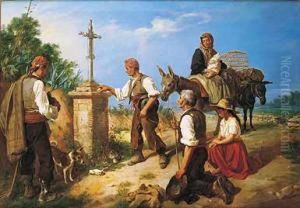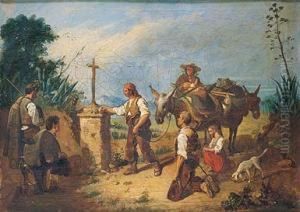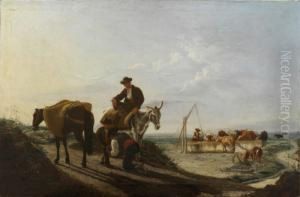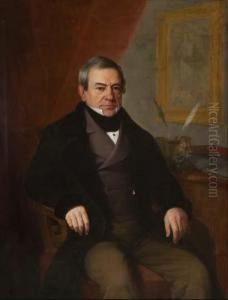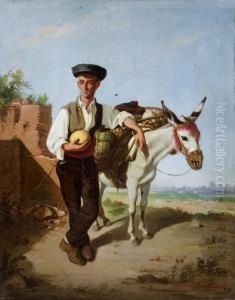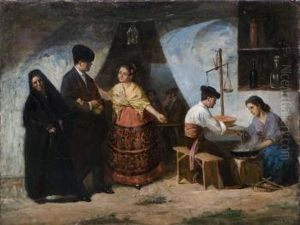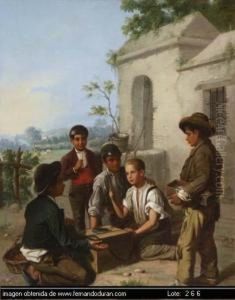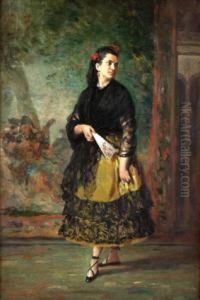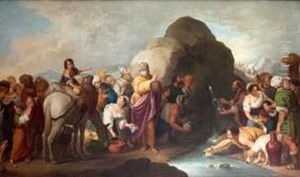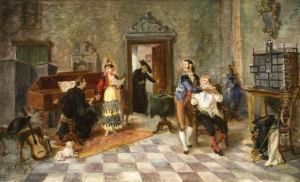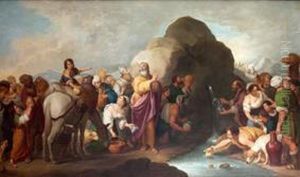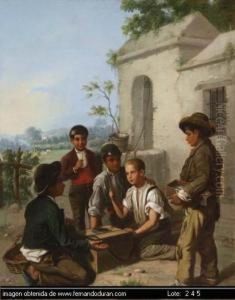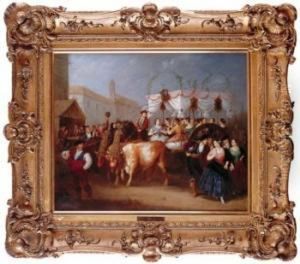Manuel Cabral Cabral y Aguado Bejarano Paintings
Manuel Cabral Aguado Bejarano, often known simply as Cabral Bejarano, was a Spanish painter born on May 19, 1827, in Seville, Spain. He was a prominent figure in the Spanish art scene of the 19th century and is best known for his genre scenes and costumbrismo works, which depict the customs, manners, and everyday life of his time.
Cabral Bejarano showed an early interest in art and was enrolled in the School of Fine Arts of Seville at a young age. There, he was a pupil of the famous painter Antonio Cabral Bejarano, who was his uncle and played a significant role in his artistic development. He also studied under other noted Spanish artists of the period, such as Manuel Barrón and Joaquín Domínguez Bécquer, absorbing their influences and honing his skill in painting.
Throughout his career, Cabral Bejarano was deeply influenced by the Sevillian and Andalusian culture. His works often featured vibrant scenes of local festivals, bullfights, and picturesque landscapes filled with the light and color typical of the region. He was also known for his portraits, which often captured the character and social standing of his subjects with a careful and realistic touch.
Cabral Bejarano's art was well-received during his lifetime, and he participated in numerous exhibitions. He achieved recognition not only in Spain but also abroad, particularly in Latin America, where his works were highly regarded. His paintings can be found in various museums and private collections, and they continue to be appreciated for their historical value and artistic quality.
The artist passed away on February 1, 1891, in Seville. Despite his death, Cabral Bejarano's legacy lives on, and he is remembered as an important figure in the history of Spanish art, particularly for his contributions to the costumbrismo genre. His depiction of 19th-century Spanish life provides a valuable visual record of the society and culture of his time.
